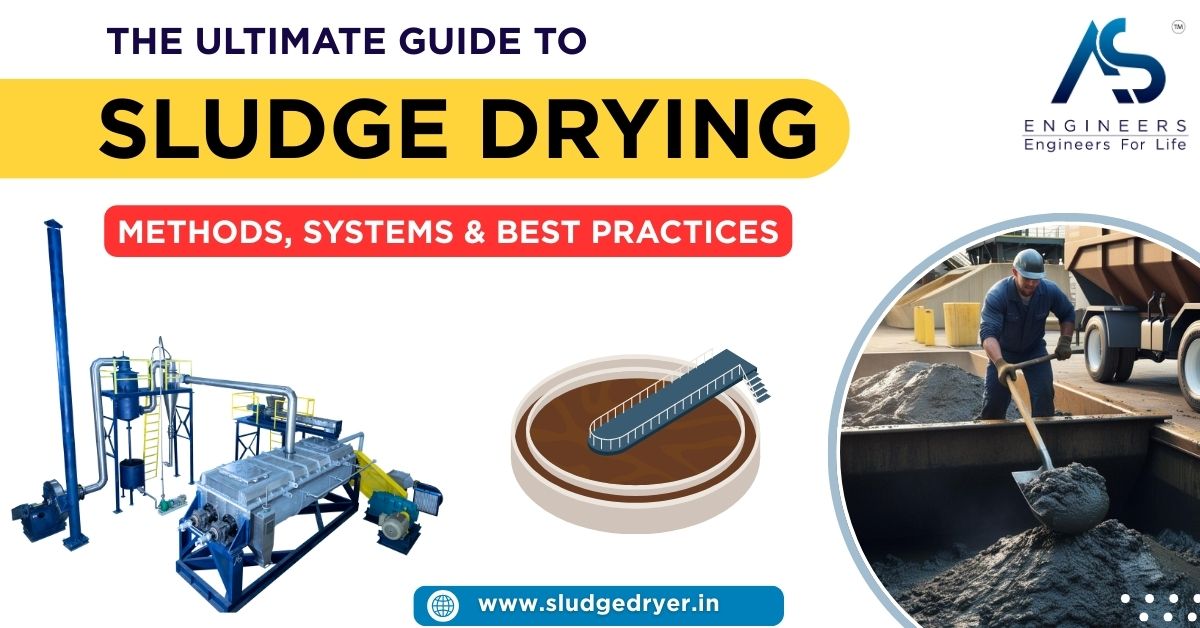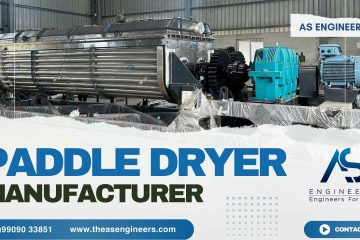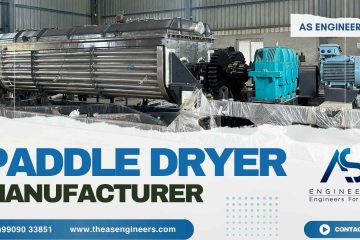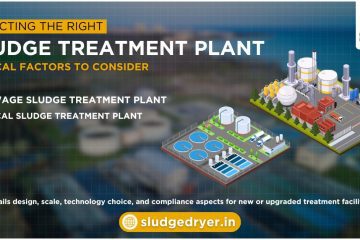Did you know that wastewater treatment facilities across the United States process approximately 34 billion gallons of wastewater daily, producing millions of tons of sludge that requires proper management? The challenge of handling this waste efficiently has never been more pressing. Sludge drying represents one of the most effective solutions for reducing waste volume, minimizing environmental impact, and creating opportunities for beneficial reuse of what was once considered merely a disposal problem.
Effective drying sludge processes can reduce volume by up to 80%, dramatically cutting transportation and disposal costs while creating a more stable, pathogen-free end product. Whether you’re a wastewater treatment professional, an environmental engineer, or a facility manager seeking to optimize your waste management protocols, understanding the intricacies of sludge drying methods is essential for operational efficiency and environmental compliance.
This comprehensive guide explores everything you need to know about the sludge drying process, from fundamental principles to cutting-edge technologies, helping you make informed decisions about this critical aspect of waste management.
Table of contents
- Understanding Sludge: Composition and Challenges
- The Science Behind Sludge Drying
- Comprehensive Overview of Sludge Drying Methods
- Advanced Sludge Dryer Systems for Maximum Efficiency
- Sludge Drying in Water Treatment: Applications and Benefits
- Selecting the Right Sludge Dryer Manufacturer
- Implementation Best Practices for Sludge Drying Process
- Environmental Impacts and Regulatory Compliance
- Beneficial Uses of Dried Sludge
- Future Trends in Sludge Drying Technology
- Sludge Dewatering and Drying: An Integrated Approach
- Conclusion: Making the Right Choice for Your Facility
Understanding Sludge: Composition and Challenges
What Exactly Is Sludge?
Before diving into drying methods, let’s establish what we’re working with. Sludge is the semi-solid residual material produced during wastewater treatment processes. Its composition varies widely depending on the source, but typically includes:
- Water (70-99%)
- Organic materials (bacteria, plant residues, food waste)
- Inorganic compounds (salts, metals, sand)
- Potential pathogens and pollutants
- Chemical precipitates from treatment processes
The high water content presents the primary challenge in sludge management, making it bulky, heavy, and expensive to transport or dispose of without proper treatment.
Common Challenges in Sludge Management
Wastewater treatment facilities face numerous obstacles when dealing with sludge:
- Volume management: Untreated sludge occupies substantial space and requires frequent transportation.
- Pathogen concerns: Raw sludge can harbor harmful bacteria, viruses, and parasites.
- Odor control: The decomposition of organic matter produces unpleasant odors.
- Environmental compliance: Increasingly strict regulations govern sludge disposal and utilization.
- Cost considerations: Treatment, transportation, and disposal expenses represent significant operational costs.
These challenges underscore why effective sludge drying in water treatment has become a cornerstone of modern waste management strategies.
The Science Behind Sludge Drying
Moisture Content and Its Significance
The effectiveness of any sludge drying process depends on understanding the relationship between different forms of moisture present:
- Free water (70-75% of total moisture): Relatively easy to remove through mechanical dewatering
- Interstitial water (20-25%): Found in spaces between solid particles
- Surface water (5-10%): Held by capillary forces
- Intracellular water (2-5%): Contained within microbial cells, requiring thermal energy for removal
The thermal drying of sludge becomes necessary to remove interstitial, surface, and intracellular water after mechanical dewatering has removed free water.
Key Parameters in the Drying Process
Several factors influence drying efficiency:
- Temperature: Higher temperatures accelerate moisture evaporation but must be controlled to prevent unwanted reactions
- Residence time: Duration of exposure to drying conditions
- Surface area: Greater exposure permits faster moisture removal
- Air flow rate: Affects the rate of moisture transfer away from the sludge
- Initial moisture content: Determines the energy required for complete drying
Optimization of these parameters is essential for designing efficient sludge dryer systems.
Comprehensive Overview of Sludge Drying Methods
Mechanical Dewatering Techniques (Pre-Drying)
Before thermal drying, mechanical dewatering reduces moisture content cost-effectively:
Belt Filter Presses
These continuous dewatering systems pass sludge between porous belts under pressure, squeezing out water while retaining solids. Advantages include:
- Moderate capital costs
- Lower energy consumption
- Continuous operation capability
However, they typically achieve only 18-25% dry solids content, necessitating further drying for many applications.
Centrifuges
Using centrifugal force to separate solids from liquids, these units offer:
- Compact footprint
- Enclosed operation (odor control)
- Higher solids content (20-30%) than filter presses
The trade-off includes higher energy consumption and potentially higher maintenance requirements.
Screw Presses
These slowly rotating screw mechanisms gradually compress sludge, offering benefits such as:
- Low energy consumption
- Minimal supervision requirements
- Lower washwater usage
Screw presses typically achieve 18-25% solids content, depending on sludge characteristics.
Thermal Drying Technologies
After mechanical dewatering, thermal drying of sludge further reduces moisture content:
Direct Drying Methods
In direct drying, the heating medium contacts the sludge directly:
Rotary Drum Dryers
These horizontal cylinders rotate while hot gases pass through, directly contacting the sludge. Benefits include:
- High throughput capacity
- Good mixing and heat transfer
- Ability to handle varying moisture contents
With operating temperatures of 400-600°C, rotary drums can achieve dry solids content exceeding 90%.
Fluidized Bed Dryers
These systems suspend sludge particles in a hot air stream, creating a fluid-like state for efficient drying:
- Excellent heat transfer efficiency
- Uniform product quality
- Good control over retention time
Fluidized bed technology works well for granular materials and can achieve 85-95% dry solids content.
Indirect Drying Methods
Indirect dryers separate the heating medium from the sludge with a heat transfer surface:
Paddle Dryers
These specialized sludge dryer systems use hollow shafts and paddles to transfer heat while slowly moving material through the drying chamber:
- Lower exhaust air volume (reduced air pollution control requirements)
- Lower explosion risk
- Excellent for sticky, high-moisture materials
Paddle dryers can achieve 90-95% dry solids content with good energy efficiency.
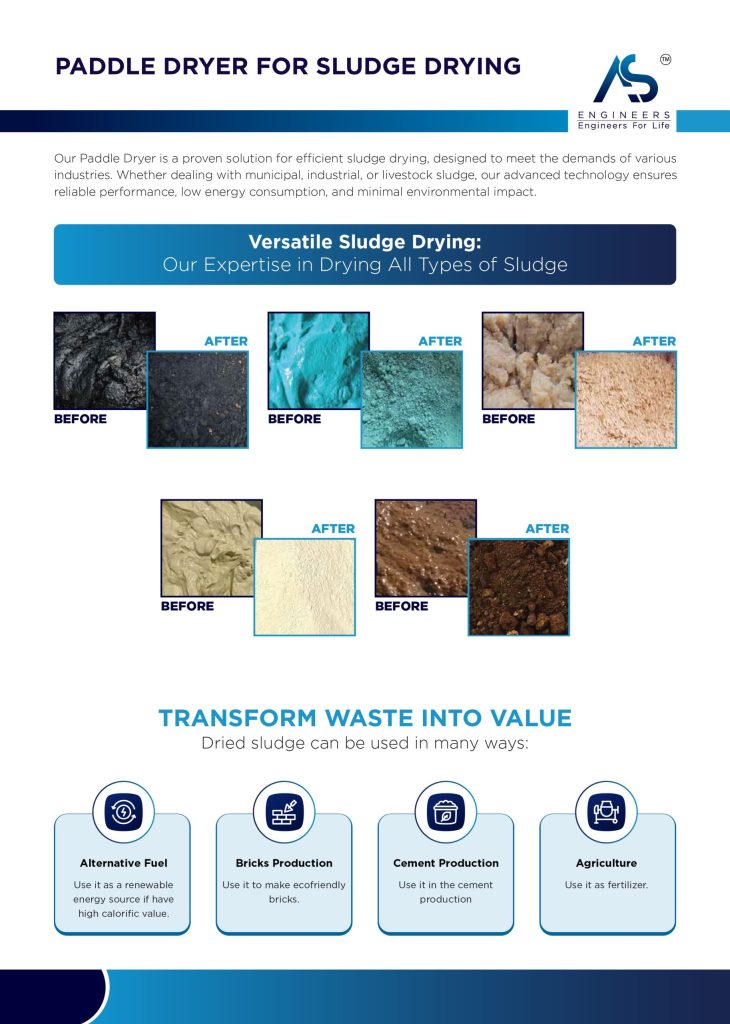
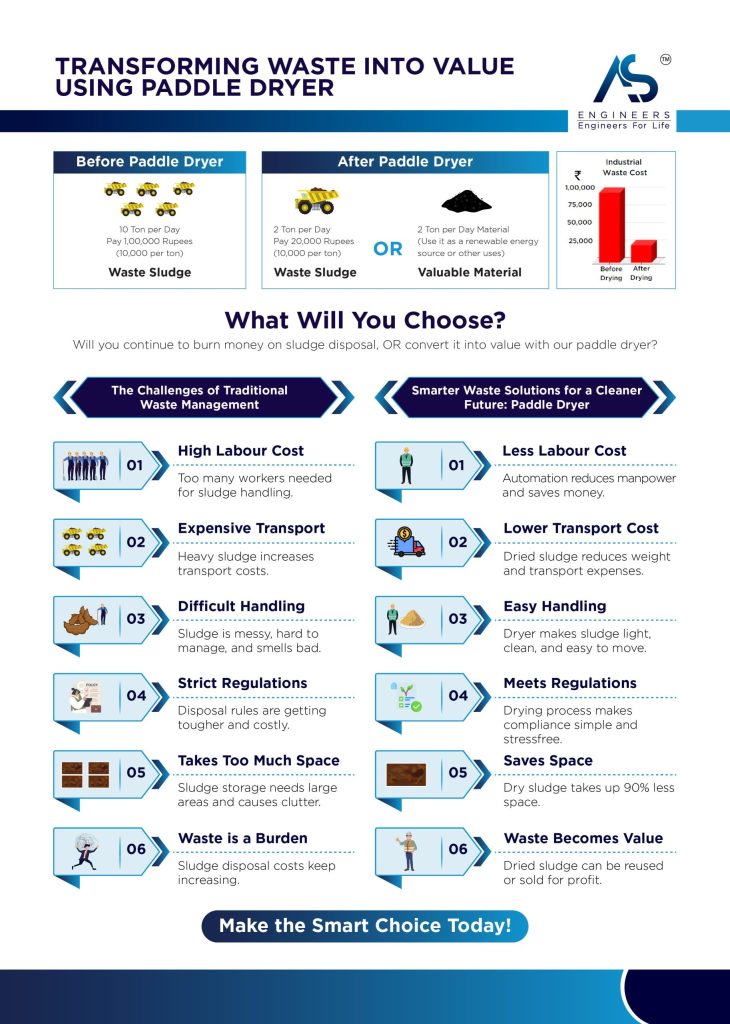
Disc Dryers
Consisting of hollow discs mounted on a rotating shaft, these dryers provide:
- Compact design
- Self-cleaning operation
- Lower dust generation
Disc dryers work well in applications requiring precise temperature control, achieving 90-95% dry solids content.
Solar Drying Systems
Harnessing renewable energy, solar dryers utilize greenhouse structures with controlled ventilation:
- Minimal energy costs
- Simple operation
- Lower capital investment
The drawbacks include weather dependency and larger land requirements. These systems typically achieve 60-80% dry solids content, depending on climate conditions.
Advanced Sludge Dryer Systems for Maximum Efficiency
Hybrid Drying Solutions
Modern facilities increasingly implement hybrid approaches combining multiple technologies:
- Mechanical dewatering followed by thermal drying
- Combined solar and conventional drying systems
- Multi-stage drying with heat recovery between stages
These integrated sludge dryer systems optimize energy usage while achieving desired dry solids content.
Heat Recovery and Energy Efficiency
Advanced energy recovery features significantly improve operational economics:
- Waste heat utilization from other processes
- Condensation heat recovery
- Cogeneration integration
- Biogas utilization from anaerobic digestion
A well-designed heat recovery system can reduce energy consumption by 15-30%, substantially lowering operational costs.
Automation and Control Systems
Modern sludge drying process equipment incorporates sophisticated controls:
- Real-time moisture monitoring
- Automated feed rate adjustment
- Predictive maintenance systems
- Energy consumption optimization
- Remote monitoring capabilities
These smart features ensure consistent product quality while minimizing energy usage and maintenance requirements.
Sludge Drying in Water Treatment: Applications and Benefits
Volume Reduction Benefits
Effective sludge drying in water treatment facilities delivers substantial volume reduction:
- 80-90% volume decrease compared to dewatered sludge
- 95-98% reduction compared to raw sludge
This dramatic reduction translates directly into lower transportation costs and reduced landfill space requirements.
Pathogen Elimination
The thermal process effectively destroys pathogens:
- Temperatures above 80°C eliminate most pathogens
- Extended exposure ensures complete sanitation
- Creates safer handling characteristics
These benefits make dried sludge suitable for land application in many jurisdictions.
Enhanced Storage Stability
Dried sludge offers significant practical advantages:
- Minimal biological activity
- Reduced odor generation
- Extended storage capability
- Lower leachate potential
These characteristics simplify logistics and reduce environmental concerns during storage.
Financial Considerations
The economics of implementing a sludge dryer system include:
- High initial capital investment
- Reduced ongoing transportation costs
- Potential disposal fee reductions
- Possible revenue from beneficial use products
Most facilities achieve return on investment within 3-7 years, depending on local disposal costs and scale of operations.
Selecting the Right Sludge Dryer Manufacturer
Key Considerations When Choosing Equipment
When evaluating a sludge dryer manufacturer like AS Engineers, consider:
Experience and Reputation
- Industry longevity
- Installation references
- Performance guarantees
- After-sales support capability
Technical Capabilities
- Custom design expertise
- Scalability options
- Integration with existing systems
- Material handling experience
Energy Efficiency
- Heat recovery systems
- Renewable energy compatibility
- Operating cost transparency
- Energy consumption guarantees
Automation Level
- Control system sophistication
- Remote monitoring options
- Data collection and reporting
- Maintenance prediction features
Evaluating Total Cost of Ownership
Look beyond initial purchase price to evaluate:
- Energy consumption over expected lifespan
- Maintenance requirements and costs
- Spare parts availability and pricing
- System reliability and downtime potential
- Upgrade pathways as technology evolves
Implementation Best Practices for Sludge Drying Process
Pre-Implementation Planning
Before installing a new sludge drying process, thorough planning should include:
- Comprehensive sludge characterization
- Physical properties
- Chemical composition
- Seasonal variations
- Dewatering characteristics
- Pilot testing
- Performance verification
- Parameter optimization
- Sample product generation
- Energy consumption measurement
- Site evaluation
- Space requirements
- Utility availability
- Environmental considerations
- Integration with existing processes
Operational Optimization Strategies
Once installed, focus on optimizing performance:
- Feed consistency management
- Uniform moisture content
- Regular particle size
- Consistent feed rate
- Proper conditioning
- Energy efficiency monitoring
- Regular performance audits
- Heat recovery optimization
- Maintenance of thermal efficiency
- Operating schedule optimization
- Quality control protocols
- Regular sampling and testing
- Moisture content verification
- Pathogen testing
- End product consistency monitoring
Safety Considerations
Safety remains paramount when implementing sludge drying methods:
- Dust explosion prevention
- Proper ventilation
- Explosion-proof equipment
- Dust suppression systems
- Regular cleaning protocols
- Thermal safety
- Insulation maintenance
- Temperature monitoring
- Emergency cooling systems
- Operator protection protocols
- Emissions control
- Odor management systems
- Particulate filtration
- Condensate treatment
- Compliance monitoring
Environmental Impacts and Regulatory Compliance
Emissions Considerations
The sludge drying process creates potential emissions that require management:
- Particulate matter
- Volatile organic compounds
- Odorous compounds
- Water vapor and condensate
Modern systems incorporate multi-stage treatment to ensure compliance with local air quality regulations.
Regulatory Framework
Facilities must navigate complex regulations covering:
- Air emissions permits
- Biosolids classification standards
- Land application requirements
- Transportation regulations
- Storage restrictions
Staying ahead of evolving regulations requires ongoing monitoring and adaptation of drying processes.
Sustainable Practices in Sludge Management
Forward-thinking facilities embrace comprehensive sustainability:
- Energy-efficient drying technologies
- Renewable energy integration
- Beneficial reuse of dried product
- Life-cycle assessment of management options
- Carbon footprint reduction strategies
These approaches align with broader environmental goals while potentially improving economic performance.
Beneficial Uses of Dried Sludge
Agricultural Applications
Properly dried biosolids offer agricultural benefits:
- Soil amendment properties
- Slow-release nutrient content
- Improved soil structure
- Reduced need for chemical fertilizers
Most jurisdictions have specific quality requirements for agricultural use based on pathogen content, metals concentrations, and vector attraction reduction.
Energy Recovery Options
The high calorific value of dried sludge makes it valuable for energy production:
- Direct combustion in dedicated facilities
- Co-firing with conventional fuels
- Gasification technologies
- Pyrolysis for bio-oil production
With calorific values of 9-12 MJ/kg, dried sludge represents a significant energy resource.
Construction Materials
Innovative applications include incorporation into:
- Cement production
- Brick manufacturing
- Lightweight aggregate production
- Road base materials
These applications effectively sequester potential contaminants while offsetting virgin material usage.
Future Trends in Sludge Drying Technology
Emerging Technologies
The future of sludge drying methods includes promising developments:
- Microwave and radio frequency drying
- More uniform heating
- Reduced energy consumption
- Smaller footprint
- Faster processing time
- Supercritical water oxidation
- Combined drying and oxidation
- Complete pathogen destruction
- Potential recovery of valuable minerals
- Elimination of organic pollutants
- Advanced control systems
- Artificial intelligence optimization
- Predictive maintenance
- Real-time quality control
- Energy usage minimization
Sustainability Innovations
The industry continues moving toward greater sustainability:
- Low-temperature drying technologies
- Heat pump integration
- Waste heat utilization
- Solar-thermal hybrid systems
- Geothermal applications
- Closed-loop water systems
- Condensate recovery and reuse
- Zero liquid discharge designs
- Water quality improvement technologies
- Reduced freshwater consumption
- Resource recovery focus
- Phosphorus extraction
- Nitrogen recovery
- Rare earth element concentration
- Value-added product development
Sludge Dewatering and Drying: An Integrated Approach
The Dewatering-Drying Connection
Maximizing overall efficiency requires viewing sludge dewatering and drying as complementary processes:
- Optimized dewatering reduces drying costs
- Each 1% increase in dewatered solids content reduces drying energy by 3-4%
- Polymer optimization improves downstream drying performance
- Dewatering equipment selection affects cake characteristics for drying
- Integrated system design considerations
- Material handling between processes
- Control system integration
- Energy recovery opportunities
- Footprint optimization
- Economic balance
- Capital cost allocation between processes
- Operating cost distribution
- Maintenance requirement balance
- Overall system reliability
Case Study: Integrated System Success
A medium-sized municipal treatment plant implemented an integrated approach with remarkable results:
- Belt filter press dewatering to 22% solids
- Paddle dryer system to 92% final product
- Heat recovery from plant operations
- Biogas utilization for thermal energy
The facility achieved:
- 85% volume reduction
- Class A biosolids classification
- 40% reduction in hauling costs
- 30% overall energy savings compared to the previous process
This success demonstrates the power of properly integrated sludge dewatering and drying systems.
Conclusion: Making the Right Choice for Your Facility
Effective sludge drying represents a critical component of modern wastewater treatment operations. By significantly reducing volume, eliminating pathogens, and creating opportunities for beneficial reuse, well-designed drying systems deliver both environmental and economic benefits.
When evaluating options for your facility, consider the full lifecycle costs, operational requirements, and end-product goals. Working with experienced sludge dryer manufacturers like AS Engineers can ensure you receive a system tailored to your specific needs, with appropriate technology selection and implementation support.
The future of sludge management continues to evolve toward more energy-efficient, environmentally sustainable solutions. Treatment facilities can achieve immediate operational improvements by implementing best practices in sludge drying methods today while positioning themselves for future innovations in this essential field.
Whether your priority is regulatory compliance, operational efficiency, or environmental stewardship, a properly designed and implemented sludge drying system delivers tangible benefits across all these areas.

